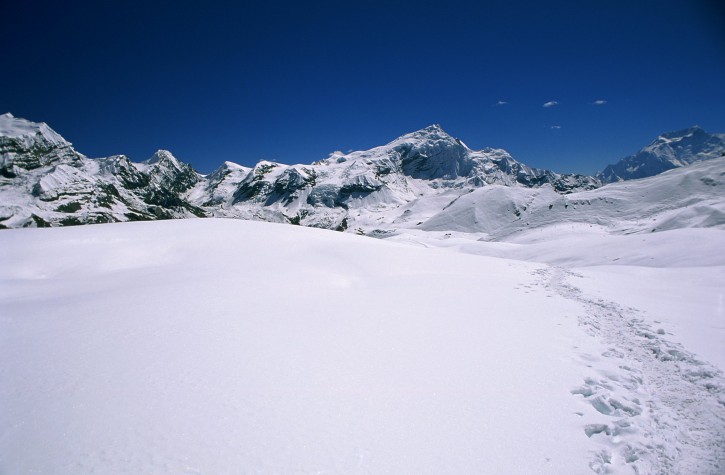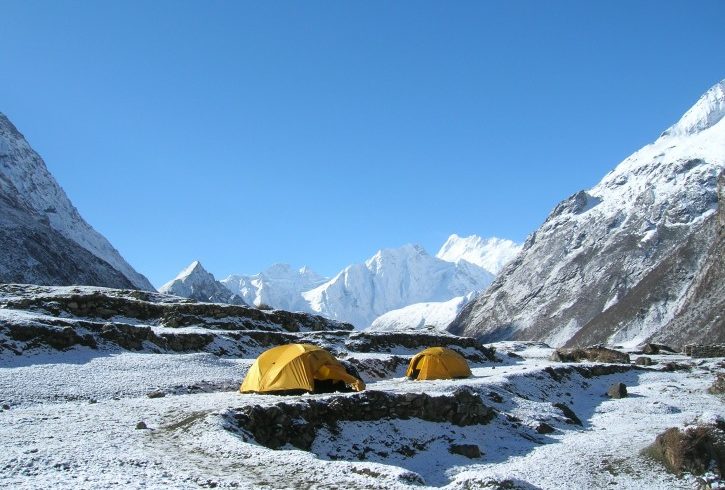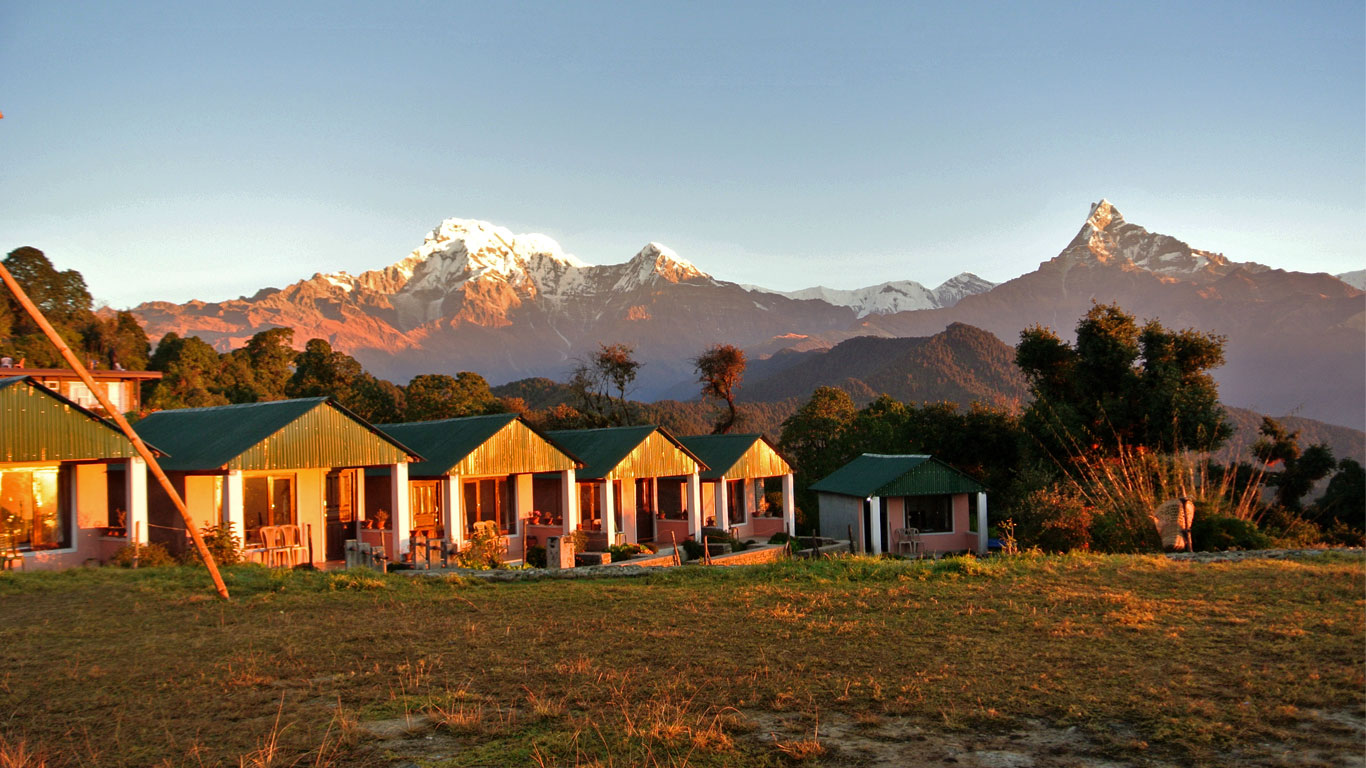Overview
The Langtang, Gosainkunda, and Helambu Trek is a popular trekking circuit in the Langtang region of Nepal, offering a diverse range of landscapes, cultural experiences, and stunning views of the Himalayas, with religious significance. Here's an overview of each segment:
Langtang Valley:
Location: Langtang Valley is situated to the north of Kathmandu, the capital city of Nepal.
Highlights: The trek usually starts from Syabrubesi and takes you through lush forests, traditional Tamang villages, and eventually to the Langtang Valley. The valley provides breathtaking views of peaks like Langtang Lirung and Ganesh Himal.
Gosainkunda:
Location: Gosainkunda is a sacred alpine lake situated at an altitude of about 4,380 meters.
Highlights: This section of the trek includes the ascent to Gosainkunda Lake, a revered site for Hindu pilgrims. The trek passes through rugged terrain with stunning mountain views and offers a chance to witness the local culture. The lake is surrounded by beautiful landscapes and is particularly important during the Janai Purnima festival.
Helambu:
Location: Helambu is a region inhabited by Sherpas and Tamangs, located to the northeast of Kathmandu.
Highlights: The Helambu segment of the trek takes you through picturesque villages, terraced fields, and rhododendron forests. The Sherpa and Tamang communities here have their own unique cultures and traditions. The trek concludes with a descent to Sundarijal, which is easily accessible from Kathmandu.
Langtang Region is marvelous tourist attraction of Nepal. One can set out this trek, drive out from Kathmandu to Dhunche either by local or reserved bus. Approximately 6 to 7 hours drive.
The Langtang Goshaikund trek is one of the popular and most beautiful trekking in Nepal. “Kund” refers to a lake in Nepali language. There are 108 lakes in this area and Goshaikund is the famous and most important religious places of pilgrimage, which is situated at an altitude of about 4380m. Surrounded by high mountains on the north and east, this lake is grand and picturesque. The lake remains frozen for six months in winter October to June.
There are other nine famous lakes such as Saraswati, Bhairav, Sourya and Ganesh Kunda. Every year during Janai Purnima in August, thousands of Hindu pilgrims come here to lake holy bathe in the lake. The lake is believed to have formed from the digging of the land by the Trishul (holy three-pointed sword) of lord Shiva after he drank the poison from Samudramanthan and desperately wanted cold water to quench the overwhelming heat of the poison.
The large rock in the center of the lake is said to be the remains of a Shiva shrine and it is also claimed that channel carries water from the lake directly to the tank at the Kumbheshwar Temple in Patan, 60 km to the south.
FAQs
The Langtang-Gosainkunda-Helambu Trek is renowned for its diverse landscapes, rich cultural experiences, and stunning mountain views. Here are some of the major attractions you can expect on this trek:
The average trek duration for the Langtang, Gosainkunda, and Helambu trek is 17-20 days from Kathmandu to Kathmandu. However, we have created a 14-day package that allows you to visit the major places along the route and enjoy your trek.
The shortest route for the Gosaikunda trek typically starts from Dhunche and follows a direct path to Gosaikunda Lake.
Here is a simplified version of the route:
Begin your trek from Dhunche, then trek to Sing Gompa, a small village on the way to Gosaikunda.
Continue the trek from Sing Gompa to reach Gosaikunda directly.
Spend time exploring Gosaikunda and its surroundings, enjoying the serene ambiance of the sacred lake.
The return trek follows the same route back to Dhunche.
This direct route allows for a shorter duration to reach the sacred Gosaikunda Lake.
It's important to note that trekking in the Himalayas involves various factors, including altitude, terrain, and weather conditions.
We have created a Langtang, Gosainkunda, and Helambu Trek package that lasts for 14 days, including the arrival and departure days. The cost of the Langtang, Gosainkunda, and Helambu trek is approximately 1275 USD, but this cost may vary during peak seasons and off seasons. Any additional services not included in the package will incur extra charges.
On your first day, you stay in Kathmandu, where you find internet facilities with high connectivity. As you move from Kathmandu and trek to higher elevations, you will still have access to internet facilities provided by many teahouses along the route. However, the range of the internet will be slow due to the thinner layer of air, which hinders the flow of internet waves. Additionally, internet connectivity also depends on the number of users on the service provider.
The best months for the Langtang, Gosainkunda, and Helambu Trek in Nepal are generally during the spring (March to May) and autumn (September to November) seasons. Here's why:
Spring (March to May):
During the spring season, the temperature is mild and the skies are clear, providing clear visibility of the Langtang range and surrounding peaks. Additionally, rhododendrons and other wildflowers bloom in vibrant colors, adding beauty to the landscapes.
Autumn (September to November):
During autumn, the weather is clear and stable with moderate temperatures, allowing excellent visibility of the mountains for trekkers to enjoy. As autumn is the festival season in Nepal, it offers trekkers the chance to witness and participate in local celebrations.
The Langtang, Gosainkunda, and Helambu Trek offers a remarkable adventure, but trekkers should be aware of potential challenges that come with the journey.
Here are some difficulties one may face during the trek:
You may face altitude challenges like altitude sickness, such as headaches, nausea, and fatigue, which can make your upcoming trek difficult.
Weather variability in the Himalayan region can make your trek harder and more challenging.
The trail to Langtang, Gosaikunda, and Helambu trek features rugged terrain, which can make walking difficult. Be prepared.
This trek may involve long hours of walking, typically 7-10 hours per day, which can be difficult for some trekkers.
Accommodations along the trek route are basic teahouses, providing essential amenities. During peak seasons, it may be harder to find facilitated accommodation and you may have to adjust to basic accommodation.
In remote areas, mobile connectivity may be limited.
In Nepal, road conditions are poor, which may be risky while traveling and may cause possible delays.
The remote location in the trails makes it difficult for trekkers to access even basic facilities.
To overcome these difficulties, be well prepared and rely on our guides for support.
While it is technically possible to undertake the Langtang, Gosainkunda, and Helambu Trek during the off-season, it comes with its own set of challenges and considerations. The primary off-seasons for trekking in the Langtang region are the monsoon season (June to August) and the winter season (December to February).
Though the monsoon season is not suitable for trekking due to heavy rainfall, limited visibility, leech and insect concerns, and slippery and muddy trails, some people love to trek in the rainy season.
In the winter season, the temperature is low and snowfall is high, making the trail difficult and increasing the risk of avalanches. However, some trekkers love to trek in these months to experience the seasonal snow. Days are shorter, and there is limited availability of accommodation.
To overcome the difficulties during the trek in the off-seasons, you need to be well prepared to tackle the upcoming challenges.
While it is technically possible to undertake the Langtang, Gosainkunda, and Helambu Trek during the off-season, you can go for this trek following some considerations.
Monsoon Season (June to August):
During the monsoon season, you can avoid the rainy days and start your trek. Likewise, starting the trek in moderate visibility, assists your better trekking experience, however, it may not be as good as in spring and autumn seasons.
Use of rain cover and rain boots helps support stable walking in mud and slippery roads.
In monsoon, leeches and insects affect the trekking experience, which can be prevented or eliminated by using local herbs to avoid harming your body from leeches.
Winter Season (December to February):
Trekker should layer the clothes over the body to avoid the cold temperatures and warm your body by drinking hot soup and water.
Heavy snow makes the path slippery, so wear snow boots and use trekking poles for body support.
Days are shorter during the winter season, so you must do early trekstart the trek early and finished it before 5 pm whichto prevent you fromgetting lost on the triail.
Some of the teahouses are closed in the winter season to avoid extreme cold, and they migrate to lower regions. During that time, inquire and pre-book the accommodation for your trek.
Higher elevations may be prone to avalanches, increasing the risk in certain areas. If such things happen, pause your trek for the next day.
During your stay in Kathmandu, you can pay with a credit card. However, as you move to higher elevations during the trek, you may find limited access to banks and may not have the facilities to pay with a credit card. It's better to use cash for payment. You can exchange your money into local currency at Thamel, Kathmandu.
In certain teahouses, there are facilities with electric geysers where electricity is available. However, in higher elevations, they boil water using gas, which can be expensive. Upon request, and for an extra charge, you can get hot water for bathing.
Yes, obviously you can take a bath in Gosaikunda, which is one of the holy sites. It is believed that bathing in Gosaikunda can eliminate your sins and cure diseases. However, it is important to prnotect nature that it is our responsibility to protect nature, so please manage your waste properly.





